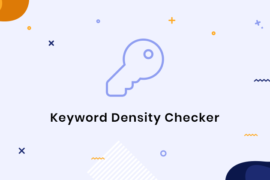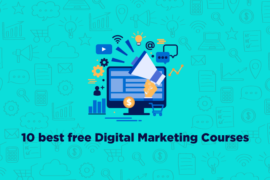Google Webmaster help your SEO may feel like an undesirable elephant in the room if you are anything like most people. You know that your company has to accomplish this, but you don’t want to be accountable for this job. If most people consider SEO, they believe it is tough, complicated, and time-consuming, but none of those things must be.
In 10 easy steps, you can really master SEO. You just have to lean in, listen to, and use the knowledge you get. While two companies do not run the same, a search engine optimization service is enough adaptable to meet any requirement, wishes or shortcomings. Remove the elephant in your room to the next level of your company!
Step 1: Configuration
You should plan for success at the first setup phase. Just like home requires a strong basis before the set-up is complete, so does your SEO approach. This is based on technologies such as Google Analytics, Google AdWords, and Google Webmaster Tools which are leveraged by a digital marketing service.
Google Analytics will play a significant role in monitoring and evaluating the interaction between visitors and your site. Since it is free and reasonably straightforward, every SEO strategy needs it. You will want to study the features it provides in addition to establishing an account and adding it to your site.
Google AdWords is very helpful for search engine optimization service research keyword capabilities. This very useful tool lets you discover out what people are looking for so that they may respond to their requirements, wishes and wishes.
Google Webmaster Tools enables you to make the most of your SEO efforts by allowing you to see your website through Google’s eyes. This toolkit provides you a sharp insight into how webpages operate, which connects to them, keywords that work, and elements to be addressed. It is helpful to read Google’s Webmaster Guidelines and if you cannot, you get a digital marketing service provider to do that for you.
Step 2: Audit site
If you have an established site, when you start your SEO, you will want to do a site assessment. Each month, Google’s penalties get tighter and regulations are being progressively reduced and dried up. The best method to verify compliance with your site is by conducting a thorough site audit.
The Moz Site Audit Checklist is a useful site audit tool as a search engine optimization service. As a trustworthy source, this comprehensive checklist examines everything from content to access to the design of the site and its links. WooRank is another excellent choice. This useful website audit tool examines and analyzes several things in the Moz checklist automatically.
Although a site audit may take considerable time and work, a search engine optimization service is very essential. Penalties for previous infringements may be severe and ultimately erase much of your hard work.
Step 3: WWW or Sans
Surprisingly, the most essential element of search engine optimization service relies on the 3 “w’s” you see in front of the website URL. You may make an expensive error with these letters if you’re not cautious. Often people believe this decides whether someone is able to reach your website by entering www.domain.com or domain.com, which isn’t exactly the case.
At the heart of the search engines is how your website is seen and how connections to your website are handled. You may opt to go with or without the ‘www,’ but you simply have to pick one. If you choose both, your website is seen as two distinct sites by search engines, which may severely harm your ranking and link quality.
Step 4: Research Keywords
Some experts believe that keyword research is the main component of search engine optimization service provided by a digital marketing service provider. It is difficult to disagree with this assertion since there are a lot of data to support it. You have to spend significantly on keyword research if you are serious about SEO.
You need to optimize your site properly to address more than 100 billion Google search inquiries a month. That begins with research on keywords. Everything else is done once you understand what your audience is looking for. Here is a sample of helpful tools to start with:
- Keyword Planner for Google AdWords
- Suggested Google
- Ubersuggest
- Trends in Google
- Tools for Google Webmaster
Step 5: Browsing
Navigation is essential on two sides as it pertains to search engine optimization service. First, it is essential for users to browse around your website easily and swiftly. Secondly, search engines must identify unambiguous relationships between links and pages.
In order to achieve these two objectives concurrently, universal navigation is needed. Do this by analyzing why people arrive at your site, the top departure pages of your site, and the search keywords.
Next, divide your goods and important pages into helpful named categories. Finally, make universal navigation of these categories and keep things easy. If you utilize drop-down menus, the search engines need to interpret them in HTML. If your product pages include above 20 items, try adding a filter to limit your search.
Step 6: Content on-page
While behind the scenes important effort goes into SEO, excellent content is still required for people to read and see. The newest Google algorithm focuses on helpful, high-quality content, rather than excessive keyword use.
Avoid cramming keywords and utilize well-placed calculated keywords instead through a digital marketing service provider. One keyword phrase per page is best targeted. Each page should have a different layout and headers for the structure and is complaint with digital marketing service providers.
Step 7: Meta-Tags
You need to think about things from the perspective of search engine users to comprehend the significance of meta-tags. How do you decide which result to click when you search for something?
You will probably examine the first few results and read a few lines from the title and description. As a website, you have just a limited number of features to convince a visitor to click on the result among millions more. This descriptive phrase is called a meta tag.
Your site will experience a significant boost if you can target meta tags correctly. Each meta description should include around 160 characters and natural keyword phrases. It is also important to offer a kind of call for action.
This may be tough to do with just a few words and needs considerable preparation and thought. If your digital marketing service provider has effectively done your keyword research and structured the contents of your site, everything should be implemented.
Step 8: Codification
For those inexperienced with the subject, coding may be a challenging aspect of SEO. Although you generally need to locate someone with instruction in coding to conduct specific activities, you should grasp one area: robots.txt.
Simply stated, robots.txt is a text file you place on your website to inform search engines which sites you may access. While this code is not required, it is extremely useful to prevent search robots in situations when you have pages.
Think of it as a notice at the door that says, “Do not disturb.” Thieves can still get in, but most people will leave you alone. It is essential to ensure that your robots.txt file is located in your site’s main directory and is formatted properly.
Step 9: Planning
You may have a nice, well-structured website, but your hard work doesn’t worth anything until you can see it. Your website has to be indexed by search engines and directories like DMOZ to get maximum traffic and exposure. If not, major men like Google, Yahoo! and Bing will seldom locate the most relevant page on your website (if your site is found at all).
Many methods and digital marketing service providers claim that search engines will index your site. However, establishing a sitemap is the less time-consuming and most reliable method to manage search engines and visitors through the contents of your site.
Visitors can easily browse your website content using an HTML sitemap and go to the most relevant section. Similarly, the search engines scan an XML site map to guarantee that the most important page on your site is shown.
Step 10: Off-Page
In addition to the work you have put into your website, you will have to work hard on your page. Concentrate on link building by means of content marketing, hiring a digital marketing service provider, blog authoring, guest blogging, infographics, site directories, and other tools which enable you to leave traces on your site.
Social media marketing also includes off-page activities. Sites such as Facebook, Twitter, Pinterest, and Instagram may be useful for the acquisition of website visitors if correctly utilized. Whatever you do, avoid SEO tactics for black hat search engine optimization service when it comes to off-page activities.
Building confidence
You should be more aware of the significance of establishing trust online using Google+ Author Verification and WOT in addition to these 10 easy guidelines. These technologies allow your site to establish a good reputation and trust with search engines and visitors. Registering your domain name for at least five years also gives you confidence and shows that you want to remain there on a long-term basis.
SEO: It’s possible!
Do not be frightened by the noise whether you’ve hired a search engine optimization service in the past or failed or never had a shot at it. There are hundreds of publications about SEO “Do’s” and “Don’ts,” but you don’t have to learn everything at once. Follow these ten easy steps and you will be well on your way to healthy optimization of your website.





